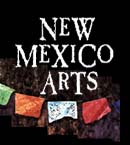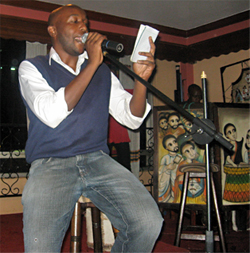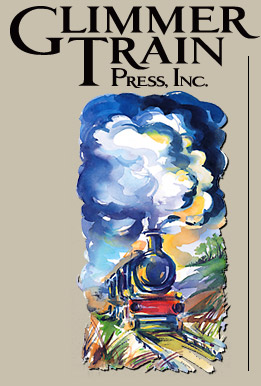In 1956, the sociologist
David Riesman studied a series of lengthy interviews commissioned by Time magazine that sought to determine how college seniors imagined their lives would look in 1970. Without clairvoyance, they couldn’t foresee the divorce and the reinvention, the yurts among the redwoods, the sex and self-help. Riesman, of course, had no idea how dramatically the world would change either, but still he was struck by the students’ tightly circumscribed collective vision. Members of the class of 1955 did not see themselves in demanding jobs and penthouse apartments. Unlike the skyscraper fantasies of his fellow Depression-era graduates, Riesman observed in his essay “The Found Generation,” theirs lacked a careerist, urban spirit. (“No life in the ulcer belt for me,” as one student put it.) The subjects were male, but Riesman noted that a survey of college women conducted by Mademoiselle in 1954 had yielded similar results. “The civic-minded life, the gregarious life,” he remarked with measured astonishment, is “anticipated as a pleasure and an end in itself.” What surprised him was the extent to which so many bright and seemingly discerning young people yearned for Westchester over Washington Square, regardless of the contemptuous view of suburban life mounting among the literary and intellectual class.
Phyllis McGinley, photo bySam Falk/NYT(1960)
Phyllis McGinley would have surmised the results and needed none of the inquiry. By the time Riesman’s essay appeared, she had been living contentedly for a number of years as a wife, mother and well-known poet in Larchmont, N.Y., writing reverentially of lush lawns and country-club Sundays in The New Yorker, Harper’s and elsewhere. A devotee of convention in nearly every respect, she committed herself to form, which during the high moment of the confessional poets seemed anachronistic enough to count as new-fashioned. McGinley’s light verse sought to convey the ecstatic peace of suburban ritual, the delight in greeting a husband, in appointing a room, in going to the butcher. Anticipation pervades her work, the feeling of something quietly joyful about to happen — beloved friends coming for dessert, perhaps, as in these lines from “June in the Suburbs”: “Through lupine-lighted borders now / For winter bones Dalmatians forage. / Costly, the spray on apple bough. / The canvas chair comes out of storage.”
The poem is from “The Love Letters of Phyllis McGinley,” a slim volume published in 1954 that went into seven printings in hardcover, eventually selling close to 150,000 copies. Seven years later, McGinley, who died in 1978, received the Pulitzer Prize for poetry for “Times Three,” which spanned her work over 30 years. In his foreword, W. H. Auden praised her dexterous, unostentatious rhyming and found in her familial sensibility a likeness to Austen and Woolf, yet also a singular, accessible voice. “I start a sentence: ‘The poetry of Phyllis McGinley is . . .,’ and there I stick,” he wrote, “for all I wish to say is ‘ . . . is the poetry of Phyllis McGinley.”
McGinley is almost entirely forgotten today, and while her anonymity is attributable in part to the disappearance of light verse, it seems equally a function of our refusal to believe that anyone living on the manicured fringes of a major American city in the middle of the 20th century might have been genuinely pleased to be there. McGinley received her Pulitzer the same year that Richard Yates’s “Revolutionary Road,” the basis for Sam Mendes’s new movie, made its debut. To Yates, Connecticut wasn’t dull; it was tragic, the end of something. Since the ’60s, versions of the same idea have prevailed almost without interruption — in fiction, in film, on television, in the countless illustrations of grinning fathers presiding over barbecues, kitschy images in which we are meant to see portraits of mournful delusion. From Cheever to “American Beauty,” we have tended to read mythologies of suburban lament as if they were reportage.
McGinley loved Westchester in no small measure because it was so much easier than the place she came from. Born to a struggling land speculator and his pianist wife in 1903, she moved with her family from Oregon to Colorado, where she was put to work farming at a young age. When she was 12, her father died and the family moved again, to live with a widowed aunt in Utah. “We never had a home,” McGinley told Time in 1965, “and to have a home, after I got married, was just marvelous.” McGinley was not thrown into marriage by default. Having taken to musical theater at the University of Utah and won college poetry prizes, she came to New York in her 20s and found work writing commercial jingles and later teaching. Having married happily at 33, she loved domesticity the way a woman can only when it has come late to find her. McGinley’s life with her husband, Bill Hayden, was, her daughter Patsy Blake told me recently, “a sanguine, benign, adorable version of ‘Mad Men.’ ” The couple entertained avidly: the regular guest list included Bennett Cerf, the drama critic Walter Kerr and leading advertising executives of the day.
The occasion for McGinley’s appearance on the cover of Time in June 1965 signaled a new chapter in her career, this time as a reluctant polemicist. For years, McGinley had been out-earning Hayden, a communications officer at Bell Telephone. She sold her poems but also children’s books — including “The Year Without a Santa Claus,” on which the animated television Christmas classic is based — and women’s magazine essays that paid tribute to thrift, child-rearing, béchamel sauce, house hunting. (“Whatever happened to the guest room?” a typical one began.) The fervor around “The Feminine Mystique” — in which Betty Friedan dismissed McGinley as one of the “housewife writers” — had prompted McGinley’s publisher to persuade her to compile the pieces as a collection. The resulting book, “Sixpence in Her Shoe,” was published in 1964 and became a best seller despite its neo-Victorian tone.
“A liberal arts education is not a tool like a hoe . . . or an electric mixer,” McGinley wrote, dismayed at a world she thought was conspiring to make women feel as though any acquired erudition would be wasted in a life of riffling through recipe cards. “It is a true and precious stone which can glow as wholesomely on a kitchen table as when it is put on exhibition in a jeweler’s window or bartered for bread and butter.” She went on to dismiss the already benighted suggestion that Bryn Mawr was a threat to what ought to get done in a kitchen. “Surely the ability to enjoy Heine’s exquisite melancholy in the original German,” she wrote, “will not cripple a girl’s talent for making chocolate brownies.”
McGinley’s point, an eternally divisive one, was clear: a woman who enjoyed herself as a wife and mother should not submit to imposed ambitions. McGinley was a Democrat and socially liberal — in 1968 Nelson Rockefeller appointed her to a bipartisan committee to study the abortion issue, and she came out resolutely on the side of choice. And yet she shared with Phyllis Schlafly the paradox of promoting traditionalism (in Schlafly’s case virulently) as she pursued a more digressive course for herself. It was McGinley’s salary, according to her daughter Patsy, that allowed Patsy and her sister to attend private school in Greenwich, Conn., and later Wellesley and Radcliffe. In “The Feminine Mystique,” Friedan chided McGinley, her Larchmont friend the playwright Jean Kerr and Shirley Jackson for betraying women, and themselves, by refusing to emphasize their sizable aspirations. (Today Friedan would level the charge at someone like Caitlin Flanagan, for whom McGinley’s positioning seems to have provided a kind of template.)
In “The 5:32,” a poem about a woman meeting her husband at the train, she proved again that she seemed to find roses where so many others were turning up crabgrass: “She said, If tomorrow my world were torn in two, / Blacked out, dissolved, I think I would remember / (As if transfixed in unsurrendering amber) / This hour best of all the hours I knew.”
Larchmont was lovely, but after a time McGinley moved on — all the way to Weston, Conn. And she relished it just as much.
NYT, Dec 24, 2008, by Ginia Bellafante, a television critic at The Times.







